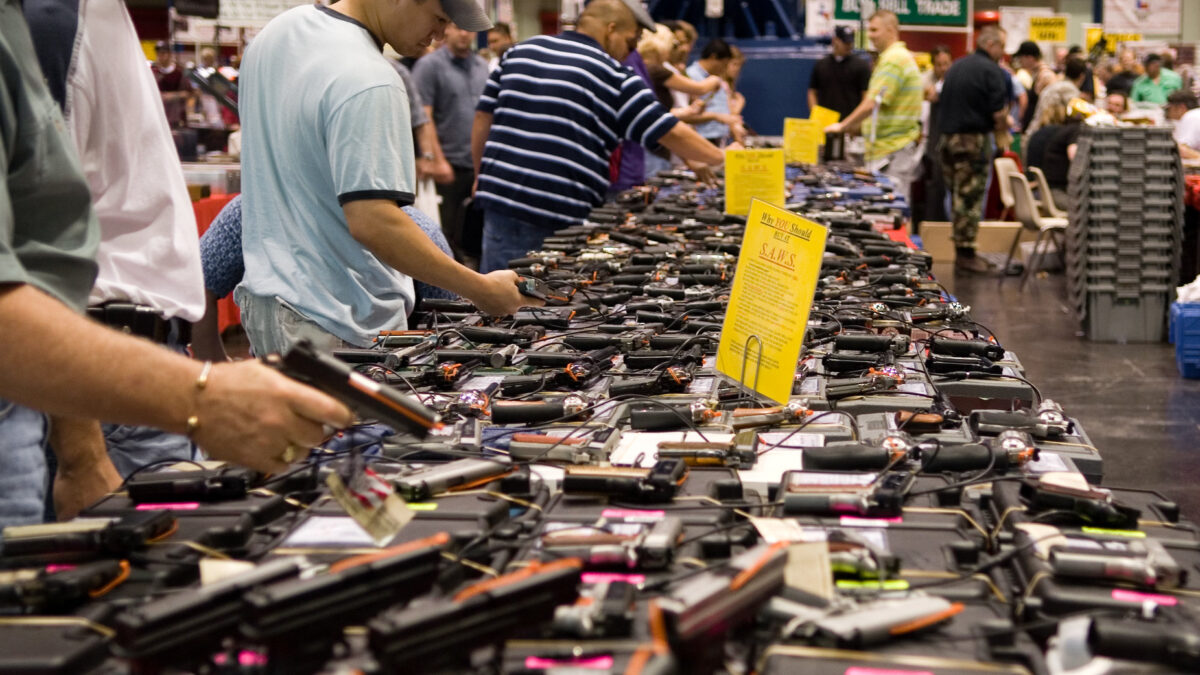
“This conflict over the 2nd amendment and the attempted removal of firearms rights will ultimately result in a civil war that will eventually balkanize the US along political, cultural and, most importantly, racial lines,” wrote the Christchurch, New Zealand mass murderer in his demented manifesto. Some Americans, unfortunately, immediately used the bloodbath to support their political causes.
Sen. Chris Murphy wondered, for instance, why Americans needed “semi-automatic rifles,” at all. “Nobody needs an AR-15 to hunt,” the Connecticut senator tweeted. “Nobody needs a semi-automatic rifle to defend their home. But mass shooters NEED these weapons in order to murder as many people as efficiently as possible. And so nobody will miss them when they are illegal – except for the killers.”
One of the nice things about having individual rights codified in a Constitution is that Americans don’t (or shouldn’t) have to explain to government officials why they choose to practice them. I’m certain nothing in the Second Amendment mentions hunting, because the right of self-defense—an individual concern, as well as a collective one—wasn’t about shooting deer, it was about protecting Americans from the state confiscating their firearms.
While Murphy’s reductionist take is obviously wrong on several counts, it’s exceptionally wrong in claiming that killers would miss these rifles. Killers will always have weapons. And they don’t need AR-15s, even though there are probably between 10 and 15 million of them in circulation in the US. And unless Murphy believes federal agents should be tasked with going house to house and confiscating every “semi-automatic rifle”—an unlikely scenario—they will be with us a very long time.
 Nor is there evidence that banning the AR-15 would reduce criminality or mass shootings, anyway. The Federal Assault Weapons Ban (1994 to 2004) did nothing to alter gun violence trends. Once the assault weapon was lifted, and the AR-15 became the most popular rifle in the country, gun violence continue to precipitously fall.
Nor is there evidence that banning the AR-15 would reduce criminality or mass shootings, anyway. The Federal Assault Weapons Ban (1994 to 2004) did nothing to alter gun violence trends. Once the assault weapon was lifted, and the AR-15 became the most popular rifle in the country, gun violence continue to precipitously fall.
Considering the political hysteria around crime, and the slight uptick in crime in 2017, many Americans might not be aware that every category of violent crime has fallen to historic lows over the past 25 years. And while every school shooting is a distressing event, inflicting deep pain on individuals, communities, and the nation, it’s important to point out that despite the proliferation of the AR-15, schools are much safer today than they were 20 years ago—even school shootings are less common, according to researchers at Northeastern. Four times as many children were killed in schools in the early ’90s than today.
Then again, AR-15s are rarely used in the crimes, in general. If you need any more proof that the AR is being singled out for political reasons, mostly due to its aesthetics, it’s worth noting that in 2017, the last year of FBI data, there were 7,105 Americans murdered by handguns and 374 by all rifles (only a fraction of which were AR-15s.) There were 1,604 knife homicides during that same span. There were 656 people killed by fists and kicking.
“Fact checkers” like to point out that not every national police department reports on the type of gun is used in homicides (3,077 to be exact), but it’s reasonable to believe that the same trends would apply to those crimes. It’s mostly big cities that don’t share information on the types of guns criminals use.
There’s a good reason that gun controllers want to depict the AR as uniquely dangerous. “As a longtime gun owner and supporter of the Second Amendment, I agreed with the Supreme Court’s ‘Heller’ holding that concluded Americans had the right to keep and bear arms. But that constitutional protection did not, and will not, extend to guns designed as weapons of war,” explained Joe Scarborough in a Twitter thread.
“If you own an AR-15, keep it,” the gracious presidential candidate Beto O’Rourke told the American people the other day, “Continue to use it responsibly and safely. I just don’t think that we need to sell any more weapons of war into this public.”
There are two major problems with these talking points.
One: No matter how many times gun-controllers refer to the AR-15 as a “weapon of war” it will still be historically and mechanically incorrect. Writers like James Fallows have, for years, been misleading readers about the history of the AR-15, purposely conflating it with the military M-16. Eugene Stoner, chief engineer of ArmaLite and its parent company Colt, marketed the AR (“ArmaLite Rifle”) directly to the civilian marketplace in the early 1960s—before its more powerful version was adopted by the US military.
Of course, every gun from the musket, to the rifle, to the revolver, to the semi-automatic handgun was once used as, or developed into, a “weapon of war.” In the end, every gun is designed to kill, otherwise it would be worthless. And if any weapon that kills can be categorized as a “weapon of war” then the AR will have some stiff competition. John Browning designed the 1911 handgun before World War I, and it was subsequently used by the US military until 1986. Now it is one of the most popular handgun designs in the country. It was a “weapon of war.”
And every great gunmaker in American history sought government contracts as a way to maximize profits. But that doesn’t mean the civilian and military versions of the AR are the same. Americans like AR-15s for a variety of reasons, include ease of use, but the civilian iteration was never used as a “weapon of war.” The major difference is that the AR-15 fires once every trigger pull, like any other semi-automatic weapon on the market. In fact, it uses smaller ammunition than most semi-automatic guns. The M-16 (and M-4)–actual weapons of war–can be fully automatic or used in three-round bursts. The AR-15, in fact, can be considered less a weapon of war when Stoner sold it to civilians (until 1977 when the patent ran out) than many other legal guns of the time. Fully automatic firearms were only effectively banned in 1986.
Two: Using the phrase “weapon of war” is just a pretext. The District of Columbia v. Heller decision found that the Second Amendment protected weapons “in common use by law-abiding citizens.” The AR-15 clearly meets this criteria. Scarborough invents an exceptionally narrow definition of Heller, in which he argues that the decision basically only protects handguns for the purpose of home protection, and, I guess, bolt-action hunting rifles. But this is clearly untrue. The Heller decision found that the Second Amendment was an individual right to keep and bear arms for any “lawful purpose,” not merely home protection (or hunting). It found that the Second Amendment “guarantee[s] the individual right to possess and carry weapons in case of confrontation.”
Gun restrictionists focus on the AR-15 because it looks like a military weapon. Once stripped of emotion, however, the argument against ARs, which feature the same mechanics as many others firearms, is that they work better. There will always be a gun that works better than other guns. The focus on the AR is merely part of an incremental push towards broader prohibitions. After all, many gun controllers openly argue that we should roll back technology to musket—also a weapon of war—because the founders never imagined firearms would become more powerful. This is historically inaccurate, as well. But when politicians go back to writing pamphlets rather than making their cases on TV and the internet, we can start to have that conversation.









